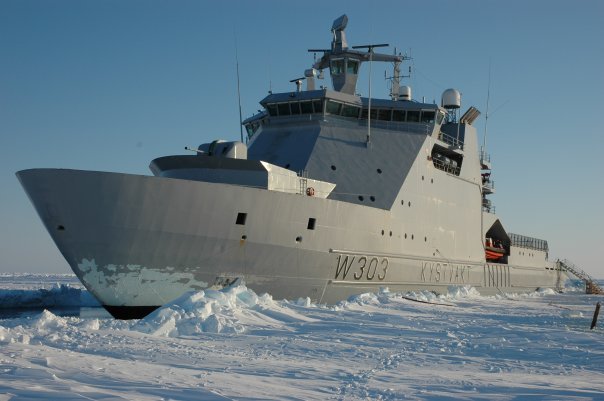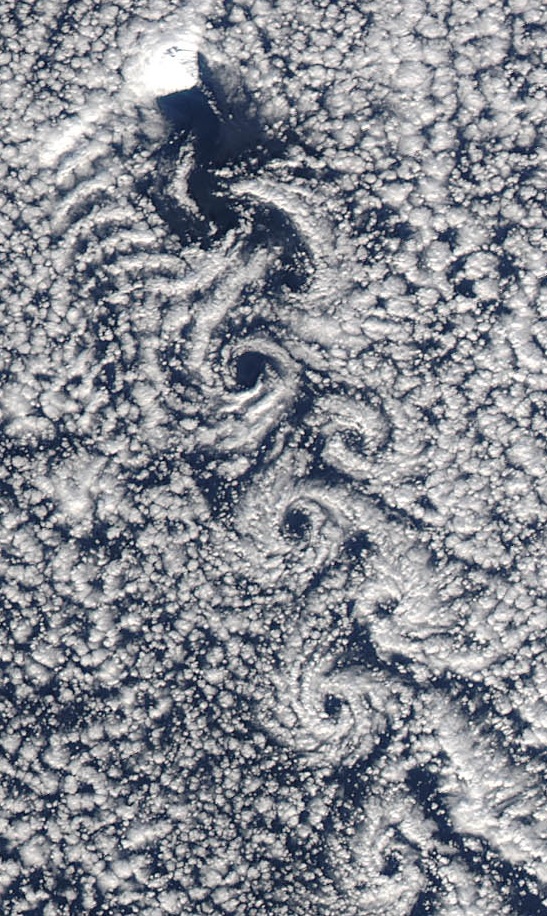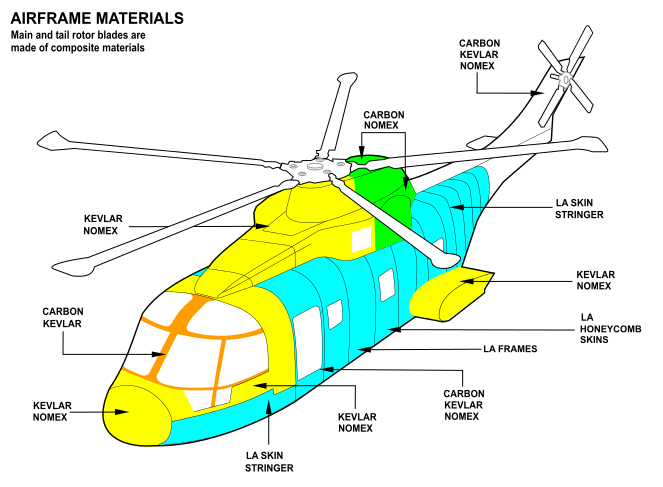|
Jan Mayen-class Offshore Patrol Vessel
The ''Jan Mayen'' class is a class of offshore patrol vessels used by the Norwegian Coast Guard. The Coast Guard first announced plans for the class in September 2016, to increase their capability to patrol Norway's expansive coastal waters, and to replace the ageing Nordkapp-class vessels. Considerably larger than their predecessors, the hulls of these ships were constructed at the Vard Tulcea shipyard in Romania. The hulls were then towed to Norway where the ships were outfitted and tested at the Vard Langsten shipyard. The total cost for the 3 ships in the class is expected to be 7.2 billion kroner ($645 million), one of the largest maritime defense expenditures ever made by Norway. Design The design of the ships was contracted to LMG Marin, a Norwegian engineering services company. The hull of the ''Jan-Mayen''-class is designed to be ice-strengthened, to enable independent navigation of icy seas. The deck is large enough at stern to accommodate an AW101 helicopter, a ... [...More Info...] [...Related Items...] OR: [Wikipedia] [Google] [Baidu] |
Norwegian Coast Guard
The Norwegian Coast Guard () is a maritime military force which is part of the Royal Norwegian Navy. The coast guard's responsibility are for fisheries inspection, customs enforcement, border control, law enforcement, shipping inspection, environmental protection, and search and rescue. It operates throughout Norway's exclusive economic zone (EEZ), internal waters and territorial waters. It is headquartered at Sortland Naval Base. In 2023 the Coast Guard had 900 employees, including conscripts, and a budget of 1.3 billion Norwegian krone. The force is subdivided into three main divisions. The Outer Coast Guard covers the EEZ and consists of three ''Jan Mayen'' class offshore patrol vessels, three ''Barentshav''-class offshore patrol vessels as well as ''Ålesund'', ''Svalbard'' and ''Harstad''. The Inner Coast Guard consists of five ''Nornen''-class patrol vessels. The Coast Guard has air support of the P-8 Poseidon patrol aircraft operated by the Royal Norwegian Air Force ... [...More Info...] [...Related Items...] OR: [Wikipedia] [Google] [Baidu] |
Ice-Strengthened Vessel
Ice navigation vessel or Ice-strengthened vessel is a class of ships specially prepared for independent ice navigation in the waters of the sea ice, polar seas and for following icebreakers in especially difficult ice conditions. Various registration authorities assign ice classes to vessels based on their technical characteristics.Unified Requirements for Polar Class ships . International Association of Classification Societies (IACS), April 2016. Due to this, ice navigation vessels are usually referred to as ice-class vessels without indicating which class they belong to, but indicating the type of vessel (e.g. ice-class tanker, ice-class cargo ship etc). Description The geometry of the hull contours of ice navigation ships is intermediate ...[...More Info...] [...Related Items...] OR: [Wikipedia] [Google] [Baidu] |
Hopen (Svalbard)
Hopen is an island in the southeastern part of the Svalbard archipelago (Norway). Hopen was discovered in 1596 by Jan Cornelisz Rijp during the third expedition by Willem Barentsz, trying to find the Northeast Passage. Later, in 1613, its name was given by Thomas Marmaduke of Hull, who named it after his former command, the ''Hopewell''. The Norwegian Meteorological Institute since 1947 operates a staffed weather station on the island with a staff of four persons. For the welfare of the crew, there are three cabins available on the island for their use. History During World War II, the Luftwaffe placed a meteorological team there under cover of Operation Zitronella. Due to their remote location, the German soldiers on Hopen were the last in Europe to surrender to the allies, who had to in fact be rescued after losing radio contact almost 5 months prior. On August 28, 1978 an early model Tupolev Tu-16 of the Soviet Air Force crashed on the island. All seven crew were kil ... [...More Info...] [...Related Items...] OR: [Wikipedia] [Google] [Baidu] |
Bear Island (Svalbard)
Bear Island (, ) is the southernmost island of the Norwegian Svalbard archipelago. The island is located at the limits of the Norwegian and Barents seas, approximately halfway between Spitsbergen and the North Cape. Bear Island was discovered by Dutch explorers Willem Barentsz and Jacob van Heemskerck on 10 June 1596. It was named after a polar bear that was seen swimming nearby. The island was considered terra nullius until the Spitsbergen Treaty of 1920 placed it under Norwegian sovereignty. Despite its remote location and barren nature, the island has seen commercial activities in past centuries, such as coal mining, fishing and whaling. However, no settlements have lasted more than a few years, and Bear Island is now uninhabited except for personnel working at the island's meteorological station ''Bjørnøya radio''. Along with the adjacent waters, it was declared a nature reserve in 2002. History Seafarers of the Viking era may have known Bear Island, but the docum ... [...More Info...] [...Related Items...] OR: [Wikipedia] [Google] [Baidu] |
Jan Mayen
Jan Mayen () is a Norway, Norwegian volcanic island in the Arctic Ocean with no permanent population. It is long (southwest-northeast) and in area, partly covered by glaciers (an area of around the Beerenberg volcano). It has two parts: larger northeast Nord-Jan and smaller Sør-Jan, linked by a wide isthmus. It lies northeast of Iceland (495 km [305 mi] NE of Kolbeinsey), east of central Greenland, and northwest of Vesterålen, Norway. The island is mountainous, the highest summit being the Beerenberg volcano in the north. The isthmus is the location of the two largest lakes of the island, Sørlaguna (South Lagoon) and Nordlaguna (North Lagoon). A third lake is called Ullerenglaguna (Ullereng Lagoon). Jan Mayen was formed by the Jan Mayen hotspot and is defined by geologists as a Continental fragment, microcontinent. Although administered separately, in the ISO 3166-1 standard, Jan Mayen and Svalbard are collectively designated as ''Svalbard and Jan Mayen'' ... [...More Info...] [...Related Items...] OR: [Wikipedia] [Google] [Baidu] |
Saab AB
Saab AB (originally , , acronym SAAB), with subsidiaries collectively known as the Saab Group (), is a Swedish aerospace and defense company, defence company primarily operating from Sweden. The company is headquartered in Stockholm, but its development and manufacturing operations are undertaken in Linköping. The company was formally founded by AB Bofors in 1937, by reforming the aero engine division of company NOHAB (founded in 1930), located in Trollhättan, into a proper aircraft manufacturer. It would soon merge with aircraft manufacturer AB Svenska Järnvägsverkstädernas Aeroplanavdelning, ASJA (founded in 1931), located in Linköping, in 1940, which had it own design bureau and is considered the spiritual predecessor to today's Saab AB. This formed the SAAB-Concern (business), concern, with the factory in Trollhättan becoming ''SAAB/T'' and the factory in Linköping (previously ASJA) becoming ''SAAB/L'' and design headquarters. From 1947, Saab started producing autom ... [...More Info...] [...Related Items...] OR: [Wikipedia] [Google] [Baidu] |
Gyrocompass
A gyrocompass is a type of non-magnetic compass which is based on a fast-spinning disc and the rotation of the Earth (or another planetary body if used elsewhere in the universe) to find geographical Direction (geometry), direction automatically. A gyrocompass makes use of one of the seven fundamental ways to determine the heading of a vehicle. A gyroscope is an essential component of a gyrocompass, but they are different devices; a gyrocompass is built to use the effect of gyroscopic precession, which is a distinctive aspect of the general gyroscopic effect. Gyrocompasses, such as the fibre optic gyrocompass are widely used to provide a heading for navigation on ships. This is because they have two significant advantages over magnetic compasses: * they find true north as determined by the axis of the Earth's rotation, which is different from, and navigationally more useful than, Magnetic North Pole#Magnetic north and magnetic declination, ''magnetic'' north, and * they have a ... [...More Info...] [...Related Items...] OR: [Wikipedia] [Google] [Baidu] |
Inertial Navigation System
An inertial navigation system (INS; also inertial guidance system, inertial instrument) is a navigation device that uses motion sensors (accelerometers), rotation sensors (gyroscopes) and a computer to continuously calculate by dead reckoning the position, the orientation, and the velocity (direction and speed of movement) of a moving object without the need for external references. Often the inertial sensors are supplemented by a barometric altimeter and sometimes by magnetic sensors (magnetometers) and/or speed measuring devices. INSs are used on mobile robots and on vehicles such as ships, aircraft, submarines, guided missiles, and spacecraft. Older INS systems generally used an inertial platform as their mounting point to the vehicle and the terms are sometimes considered synonymous. Design Inertial navigation is a self-contained navigation technique in which measurements provided by accelerometers and gyroscopes are used to track the position and orientation of an object ... [...More Info...] [...Related Items...] OR: [Wikipedia] [Google] [Baidu] |
NH90
The NHIndustries NH90 is a European medium-sized, twin-engine, multirole military helicopter. It was the first production helicopter to feature entirely fly-by-wire flight controls.Perry, Dominic"Rotor club: Our top 10 most influential helicopters." ''Flight International'', Flight Global, 21 November 2014. There is extensive use of composite materials and electronic sensors. The helicopter has two main versions, the TTH oriented towards land applications (able to carry up to 20 troops) and the NFH, oriented towards naval use and focused on such tasks as ASW and marine SAR. Over 500 have been produced for a dozen users, and it remains in production. The NH90 was developed in response to North Atlantic Treaty Organization (NATO) requirements for a battlefield helicopter which would also be capable of being operated in naval environments. It was developed and is manufactured by NHIndustries, a collaborative company owned by Airbus Helicopters (formally Eurocopter), Leonardo ... [...More Info...] [...Related Items...] OR: [Wikipedia] [Google] [Baidu] |
AW101
The AgustaWestland AW101 is a medium-lift helicopter in military and civil use. First flown in 1987, it was developed by a joint venture between Westland Helicopters in the United Kingdom and Agusta in Italy in response to national requirements for a modern naval utility helicopter. Several operators, including the armed forces of Britain, Denmark, and Portugal, use the name Merlin for their AW101 aircraft. It is manufactured at factories in Yeovil, England, and Vergiate, Italy. Licensed assembly work has also taken place in Japan and the United States. Prior to 2007, the aircraft had been marketed under the designation EH101. The original designation was EHI 01, from the name given to the Anglo-Italian joint venture—European Helicopter Industries—but a transcription error changed this to EH101. In 2000, Westland Helicopters and Agusta merged to form AgustaWestland, leading to the type's current designation. The AW101 entered into service in 1999 and has since replaced ... [...More Info...] [...Related Items...] OR: [Wikipedia] [Google] [Baidu] |
LMG Marin
{{disambig ...
LMG may refer to: Organizations * League of the Militant Godless * The Leon M. Goldstein High School for the Sciences in Brooklyn, NY, US * Linus Media Group, a Canadian entertainment company known for the Linus Tech Tips YouTube channel * LMG, LLC, an American company * BCCM/LMG, a bacterial collection in the Belgian Co-ordinated Collections of Micro-organisms Other * Light machine gun A light machine gun (LMG) is a light-weight machine gun designed to be operated by a single infantryman, with or without an assistant, as an infantry support weapon. LMGs firing cartridge (firearms), cartridges of the same caliber as the othe ... [...More Info...] [...Related Items...] OR: [Wikipedia] [Google] [Baidu] |
Royal Norwegian Navy
The Royal Norwegian Navy () is the branch of the Norwegian Armed Forces responsible for navy, naval operations of Norway, including those of the Norwegian Coast Guard. , the Royal Norwegian Navy consists of approximately 3,700 personnel (9,450 in mobilized state, 32,000 when fully mobilized) and 70 vessels, including 4 heavy frigates, 6 submarines, 14 patrol boats, 4 Minesweeper (ship), minesweepers, 4 minehunters, 1 mine detection vessel, 4 support vessels and 2 training vessels. This navy has a history dating back to 955. From 1509 to 1814, it formed part of the navy of history of the Danish navy, Denmark-Norway, also referred to as the "Common Fleet". Since 1814, the Royal Norwegian Navy has again existed as a separate navy. In Norwegian, all its naval vessels since 1946 bear the ship prefix ''KNM'', which stands for "Kongelige Norske Marine" (which translates to "Royal Norwegian Navy"); in English, these vessels are identified by the prefix ''HNoMS'', meaning "His/Her Norweg ... [...More Info...] [...Related Items...] OR: [Wikipedia] [Google] [Baidu] |







